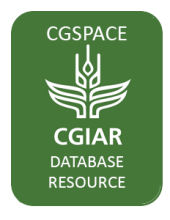/ library resources
Showing items 73 through 81 of 73379.Farmers in the MENA (Middle East and North Africa) region face several interrelated challenges including natural resource depletion, low crop productivity, and food and nutrition insecurity.
The One CGIAR Initiative TAFSSA (Transforming Agrifood Systems of South Asia) prioritizes interdisciplinary farm and landscape level research including an assessment of groundwater availability and sustainable use under scenarios of climate change scenarios and crop diversification.
With the rise in flood occurrences in recent years, conducting precise flood risk assessments has become a crucial aspect of mitigating floods in agricultural regions. This study aims to generate updated and precise flood risk maps specifically tailored to rice-based systems in Mali.
This Standard Operating Procedure (SOP) is designed for Excellence in Agronomy (EiA) Use Case teams with an interest in developing gender- and youth-responsive agronomic solutions.
The AICCRA project, led by IITA recently introduced some climate smart Agricultural Innovations and Climate information services to help improve upon the farming activities and livelihoods of farmers in some selected communities in Ghana.
Droughts are common in Mali and have a significant impact on agricultural and water resources. However, there has been no previous evaluation of agricultural drought risk in Mali.
This report elaborates on the methodology to source and screen a pipeline of high CSA impact economically and environmentally sustainable business models (SMEs) from diverse sources, prioritizing women-led SMEs, in Africa that can be linked to innovative investment solutions.
This research examined how the Smart-Valleys approach for water control was disseminated, its impact on rice yield, farmers' income, and food consumption score, as well as the farmers' perception of its advantages in Mali.
This research assessed the dissemination methods of RiceAdvice, the factors influencing farmers' decisions to use, and its impacts on rice yield, farmers' income, food consumption score, and estimated greenhouse gas emissions in Mali.
Pagination
Land Library Search
Through our robust search engine, you can search for any item of the over 64,800 highly curated resources in the Land Library.
If you would like to find an overview of what is possible, feel free to peruse the Search Guide.

